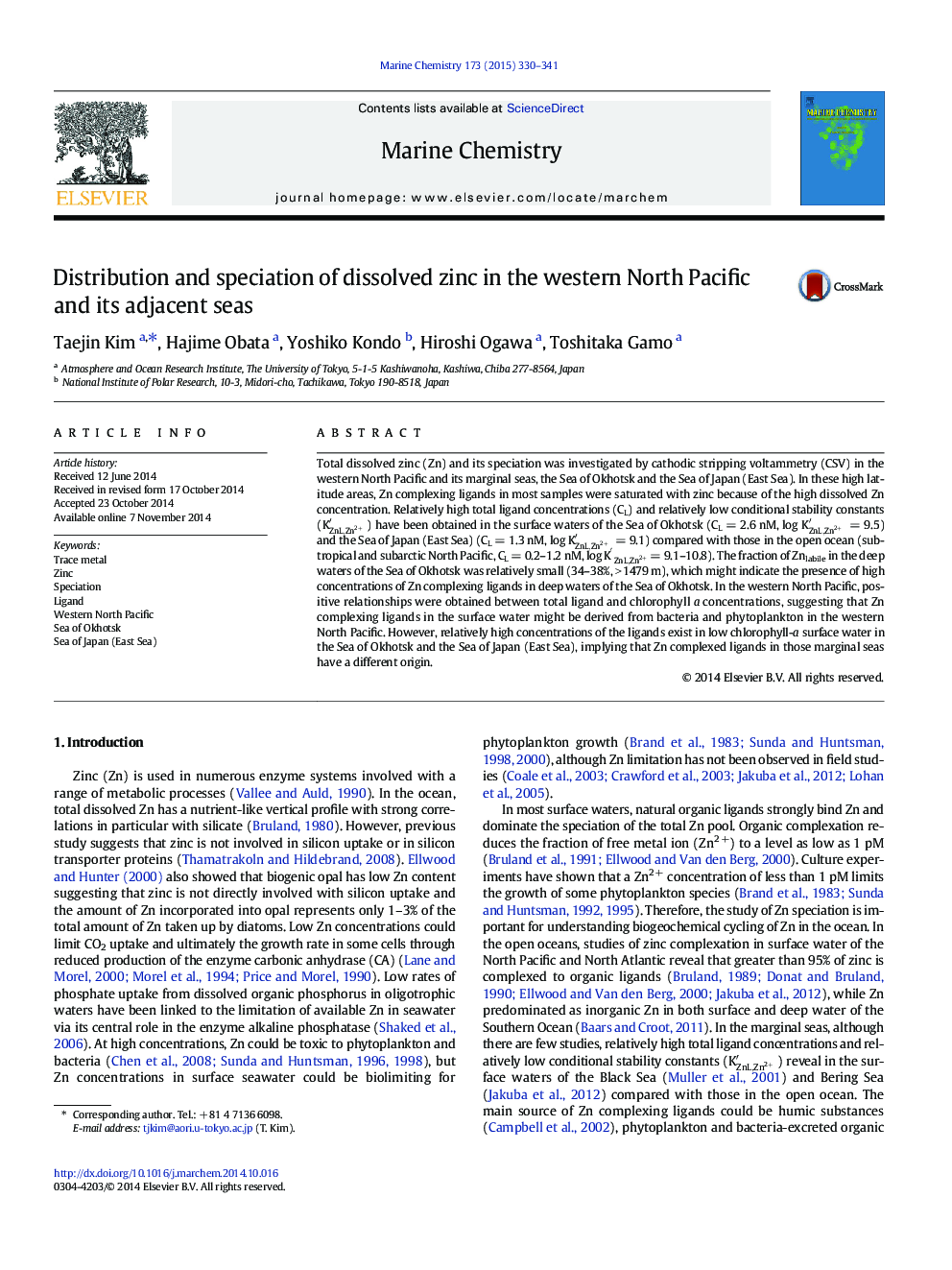| Article ID | Journal | Published Year | Pages | File Type |
|---|---|---|---|---|
| 7699417 | Marine Chemistry | 2015 | 12 Pages |
Abstract
Total dissolved zinc (Zn) and its speciation was investigated by cathodic stripping voltammetry (CSV) in the western North Pacific and its marginal seas, the Sea of Okhotsk and the Sea of Japan (East Sea). In these high latitude areas, Zn complexing ligands in most samples were saturated with zinc because of the high dissolved Zn concentration. Relatively high total ligand concentrations (CL) and relatively low conditional stability constants (KZnL,Zn2+â²) have been obtained in the surface waters of the Sea of Okhotsk (CL = 2.6 nM, log KZnL,Zn2+â²Â = 9.5) and the Sea of Japan (East Sea) (CL = 1.3 nM, log KZnL,Zn2+â²Â = 9.1) compared with those in the open ocean (subtropical and subarctic North Pacific, CL = 0.2-1.2 nM, log K'ZnL,Zn2+ = 9.1-10.8). The fraction of Znlabile in the deep waters of the Sea of Okhotsk was relatively small (34-38%, > 1479 m), which might indicate the presence of high concentrations of Zn complexing ligands in deep waters of the Sea of Okhotsk. In the western North Pacific, positive relationships were obtained between total ligand and chlorophyll a concentrations, suggesting that Zn complexing ligands in the surface water might be derived from bacteria and phytoplankton in the western North Pacific. However, relatively high concentrations of the ligands exist in low chlorophyll-a surface water in the Sea of Okhotsk and the Sea of Japan (East Sea), implying that Zn complexed ligands in those marginal seas have a different origin.
Related Topics
Physical Sciences and Engineering
Chemistry
Chemistry (General)
Authors
Taejin Kim, Hajime Obata, Yoshiko Kondo, Hiroshi Ogawa, Toshitaka Gamo,
